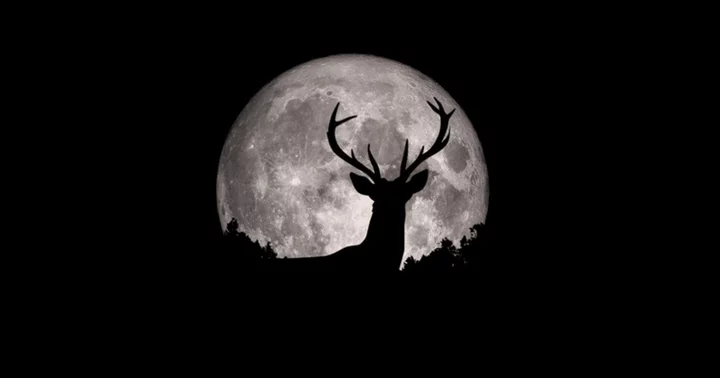The upcoming Fourth of July celebrations will be accompanied by a celestial treat as the night sky will be aglow not only with fireworks but also with the radiance of a dazzling full supermoon. Referred to as the "Buck Moon," this July supermoon is the first in a series of four consecutive supermoons, characterized by its slightly larger size and increased brightness compared to regular full moons due to its closer proximity to Earth during the fullest phase.
As the full supermoon graces the skies during the upcoming holiday week, people are eagerly anticipating the breathtaking natural phenomenon. The dazzling radiance of the July supermoon promises to create an unforgettable spectacle that will surely captivate sky enthusiasts and casual observers alike. So, keep reading to know when to catch the celestial show with your naked eyes that will reportedly reach its full phase on Monday, July 3, at 7.38 am ET.
Understanding supermoons
Supermoons captivate skywatchers when the moon's orbit brings it closer to Earth than usual, resulting in its appearance as a slightly larger and up to 30% brighter spectacle during its full phase, especially during its rise. While the precise definition of a supermoon varies in the field of astronomy, many experts agree that it refers to a full moon occurring when the moon is positioned less than an average distance of 223,000 miles from Earth. Some sources extend the classification to any full moon that approaches within 226,000 miles, while others set the cutoff at a precise distance of 223,694 miles.
However, astronomer Fred Espenak employs a unique formula to calculate the "relative distance" of the moon at its closest point of orbit. Based on this calculation, 2023 will witness four supermoons on July 3, August 1, August 30, and September 29, respectively, as per EarthSky.org and Astropixels. The August 30 full moon will hold an additional distinction as a "Blue Moon" since it marks the second full moon occurring within the same calendar month, intensifying the celestial spectacle.
What is a Buck Moon?
The Native American Algonquin tribes residing in the eastern region of the US have christened the July full moon as the "Buck Moon." This name derives from the fact that this time of year coincides with the growth stage of male deer or bucks when the antlers are in development. Alongside the "Buck Moon" moniker, the July full moon is also known by various other names.
The Old Farmer's Almanac and its counterpart, the Farmers' Almanac, refer to it as the "Thunder Moon" due to the prevalence of thunderstorms during the hot summer month of July. It's also sometimes called the "Hay Moon." Native American tribes provide additional versions, such as the "Ripe Corn Moon" by the Cherokee tribe and the "Middle of Summer Moon" by the Ponca tribe. The Zuni tribe characterizes the supermoon with the unique name, "Moon When Limbs of Trees Are Broken by Fruit."
When can you catch a glimpse of the celestial show?
The July supermoon of 2023 will officially reach its complete phase on Monday, July 3, at 7.38 am ET, casting a mesmerizing glow upon the world below. Observers in the New York City region will witness the moon appear 99% full when it rises in the southeastern sky at 8.21 pm on Sunday, July 2. The supermoon will reach its peak brilliance as it ascends at 9.22 pm on Monday, July 3, in the southeastern direction and gracefully sets in the southwestern sky at 6.21 am on Tuesday, Independence Day, according to TimeAndDate.com. Notably, the near-full supermoon, boasting an illumination of 98%, will rise once again on Tuesday at 10.11 pm and set on Wednesday, July 5, at 7.41 am, providing additional opportunities to witness its enchanting beauty.
So, be sure to look up and witness the mesmerizing beauty of the heavens as nature puts on a celestial show this month. You can check the schedule for the moon-rise and moon-set times in your respective city or town to catch the supermoon in all its glory.









